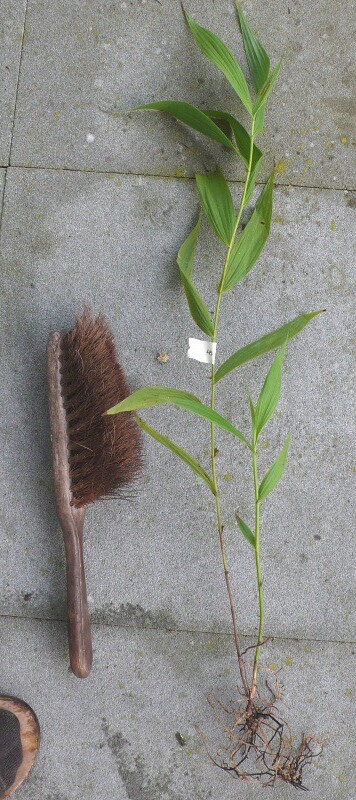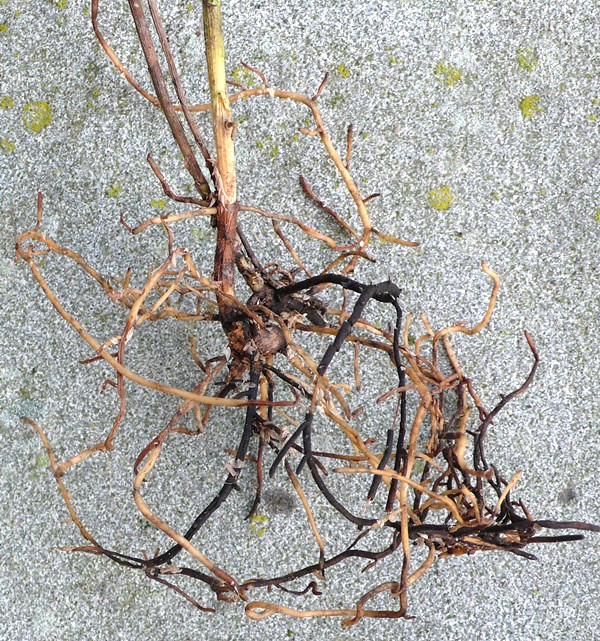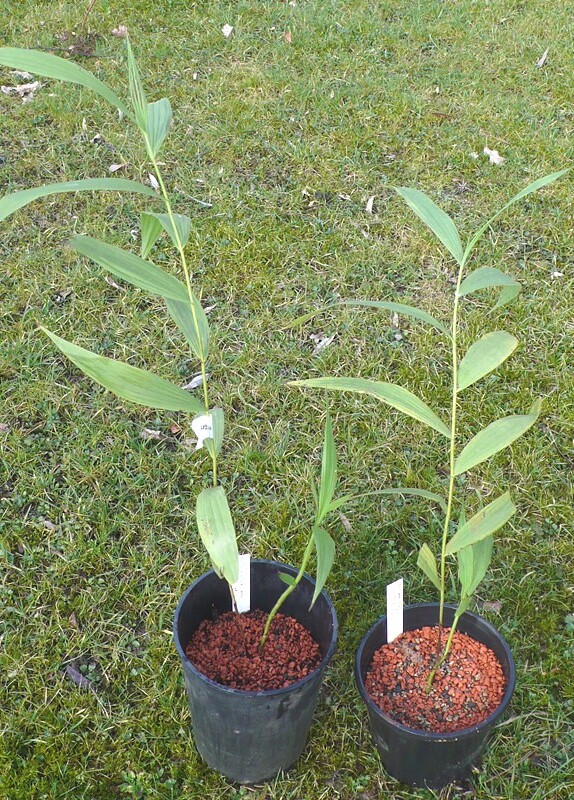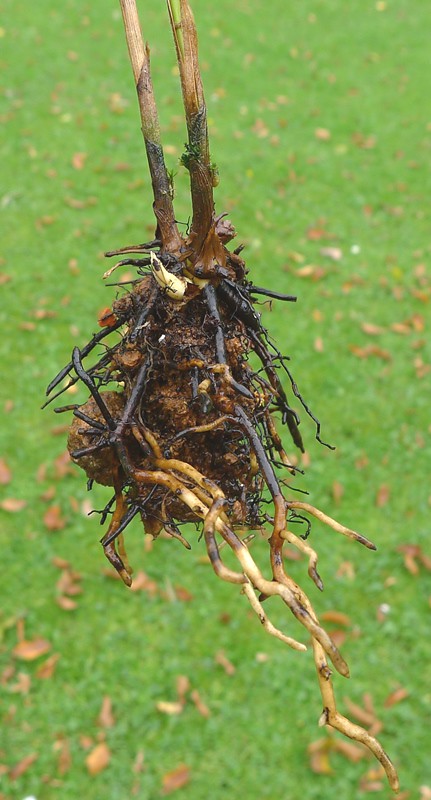You are using an out of date browser. It may not display this or other websites correctly.
You should upgrade or use an alternative browser.
You should upgrade or use an alternative browser.
Selenipedium aequinoctiale, second attempt
- Thread starter Berthold
- Start date

Help Support Slippertalk Orchid Forum:
This site may earn a commission from merchant affiliate
links, including eBay, Amazon, and others.
M
Marc
Guest
I allready saw you post them on orchideenkultur.net. I wasn't surprised to see that you bought them. I found them myself when I was talking with our fellow forum user Lars who was taking care of the Mundiflora sales boot.
I wish you a lot of luck with them.
I wish you a lot of luck with them.
- Joined
- Dec 16, 2009
- Messages
- 3,772
- Reaction score
- 4,054
Hello! I have two attempts too to keep it alive. Firstly I removed peat like ball from roots and planted it into similar mix as yours. All my plants died within one month. Second time I leave this ball on root system and planted it into peat, one growth died slowly, second one is in alive and a new growth developed what is about 10 cm tall at this moment. I keep it in shade anyway, however some description mentions sunny opened grass fields near the forests as habitat of plants.
B
biothanasis
Guest
Good luck!!!!
Hello! I have two attempts too to keep it alive. Firstly I removed peat like ball from roots and planted it into similar mix as yours. All my plants died within one month.
Did You sterilize the subtrate? The problem is the rotting of the root system by infections.
I hope, that sterilization brings a time advantage of 2 month for the plant to establish in the new sorrounding and can start metabolism via root system. and increase resistance against rotting by that.
SlipperFan
Addicted
Hard to believe that plant is in the slipper family!
NYEric
Well-Known Member
Good luck.
D
Dido
Guest
Good luck Berthold keep us posted of your succes
NYEric
Well-Known Member
Wow! I just saw the price!!! 
W. Beetus
Well-Known Member
I'll be following your plants! Please keep us updated.
The best way to keep the plant alive is the promotion by appropriate fungi.
But the original fungus with its special subtrate to survive is not available here in Germany.
I am pretty sure that other fungi exist with the same promotion effect for this plant species. In this case the plant needs protection by the fungus against infection and not promotion for alimentation.
But for the test to find the right fungus I need about 20 plants and I only have 2 available.
But the original fungus with its special subtrate to survive is not available here in Germany.
I am pretty sure that other fungi exist with the same promotion effect for this plant species. In this case the plant needs protection by the fungus against infection and not promotion for alimentation.
But for the test to find the right fungus I need about 20 plants and I only have 2 available.
Hakone
Well-Known Member
- Joined
- Nov 13, 2007
- Messages
- 3,093
- Reaction score
- 271
Did You sterilize the subtrate? The problem is the rotting of the root system by infections.
I hope, that sterilization brings a time advantage of 2 month for the plant to establish in the new sorrounding and can start metabolism via root system. and increase resistance against rotting by that.
After sterilization, the substrate with germ settling after 24 hours , the substrate remains not germ-free for months .
sterilization = germ reduction but not germfree
After sterilization, the substrate with germ settling after 24 hours , the substrate remains not germ-free for months .
sterilization = germ reduction but not germfree
I am unable to estimate the time in which special bad bacteria penetrate the pot substrate into the root region 10 cm deep and multiply to a virulent concentration.
Hakone You know it is 24 hours. Thanks for that advice.
Rick
Well-Known Member
Berthold
I don't know if you have been keeping up with the K-lite fertilizing threads, but with regard to shifting of the microfloral community and/or causing root rots, I would avoid feeding anything at all or feed with little or no K in the fertilizer.
You might refer to some of Bjorns basket growing thread that utilized natural ingredients.
I have been trying out a mixture of bark, sand, perlite, and shredded leaves (various local hardwood from my front yard). I have some Paph sukhakulii and Paph calossum seedlings growing in them with no supplemental feeding at all.
I don't know if you have been keeping up with the K-lite fertilizing threads, but with regard to shifting of the microfloral community and/or causing root rots, I would avoid feeding anything at all or feed with little or no K in the fertilizer.
You might refer to some of Bjorns basket growing thread that utilized natural ingredients.
I have been trying out a mixture of bark, sand, perlite, and shredded leaves (various local hardwood from my front yard). I have some Paph sukhakulii and Paph calossum seedlings growing in them with no supplemental feeding at all.
L
Lars Pedersen
Guest
Hi Berthold
I am happy, that you are happy with the plants.
And yes, they doo look healthy
It was a pleasure to meet all you guys at the show
:-D
Lars
I am happy, that you are happy with the plants.
And yes, they doo look healthy
It was a pleasure to meet all you guys at the show
:-D
Lars
- Joined
- Dec 16, 2009
- Messages
- 3,772
- Reaction score
- 4,054
Dear Bert!
Seleni is one of the hardest to keep alive plant. Noone knows the clue for them. If it helps, I keep mine in pure akadama and use very diluted K-lite solution every waterings (30 ppm total), and mine is alive for almost 2 years. ( but slow....) It grows faster in summer, but now I placed it under Fluora tubes, begun to fade ( don't know the reason, it got more light in summer...). Maybe because of temp, so I increase it to 22-24 C. It need always wet media, doesn't tolerate drieness, but has very few root, so tends to rot because of excessive water.Belive me, akadama is the best media for it.
Seleni is one of the hardest to keep alive plant. Noone knows the clue for them. If it helps, I keep mine in pure akadama and use very diluted K-lite solution every waterings (30 ppm total), and mine is alive for almost 2 years. ( but slow....) It grows faster in summer, but now I placed it under Fluora tubes, begun to fade ( don't know the reason, it got more light in summer...). Maybe because of temp, so I increase it to 22-24 C. It need always wet media, doesn't tolerate drieness, but has very few root, so tends to rot because of excessive water.Belive me, akadama is the best media for it.
Dear Bert!
It need always wet media, doesn't tolerate drieness, but has very few root, so tends to rot because of excessive water. Belive me, akadama is the best media for it.
Yes, I kept it wet all the time, some days even standing in water.
The mix was about 80% Kanuma, 20% Seramis (inert material, 3 mm pellets) with some pellets of long time fertilizer.
But now I change the mix into 50% Akadama, 30% Kanuma, 10% Bims (pumice), 10% Seramis, which raises the pH-value a bit. I also reduced watering.
Now I am standing by for Christmas.
- Joined
- Dec 16, 2009
- Messages
- 3,772
- Reaction score
- 4,054
Yes, I kept it wet all the time, some days even standing in water.
The mix was about 80% Kanuma, 20% Seramis (inert material, 3 mm pellets) with some pellets of long time fertilizer.
But now I change the mix into 50% Akadama, 30% Kanuma, 10% Bims (pumice), 10% Seramis, which raises the pH-value a bit. I also reduced watering.
Now I am standing by for Christmas.
ONLY PURE AKADAMA!!!! It needs neutral ph and does not tolerate acidic mixes. Kanuma is far bad choice for it....
But the plant was doing well in the Kanuma dominated mix for 6 month now. The brown leave tips appear in the last 2 weeks. I think the reason was to much water in the substrate, same assumption as Yours.
Kanuma has very few water soluble components, so it influences the pH-value only very few.
The pH-value only decreases if You keep the Kanuma in the same water for a long time but not if You water the pot every day.
Kanuma has very few water soluble components, so it influences the pH-value only very few.
The pH-value only decreases if You keep the Kanuma in the same water for a long time but not if You water the pot every day.
Similar threads
- Replies
- 12
- Views
- 517






